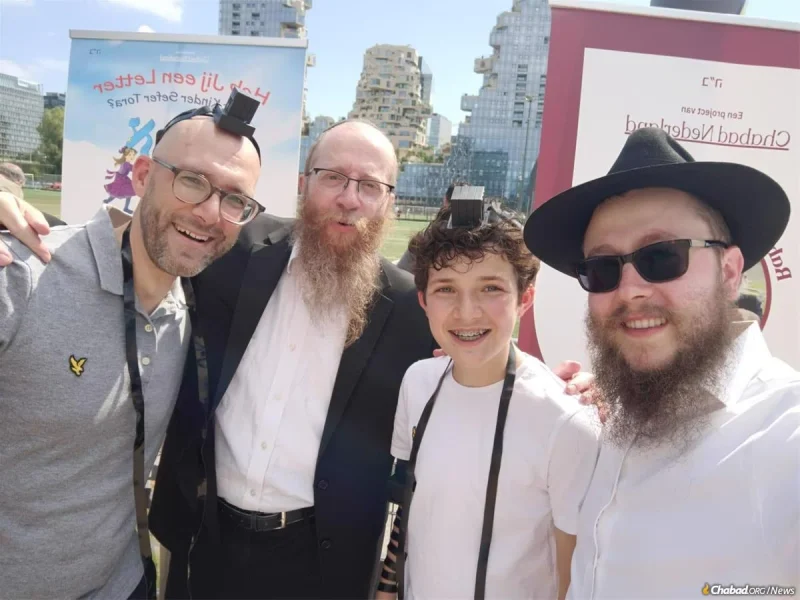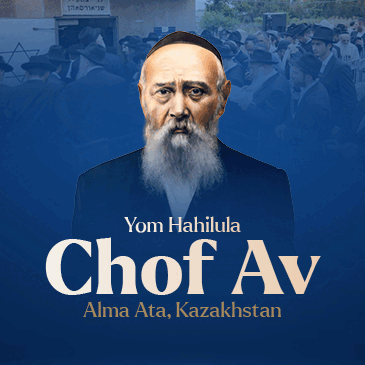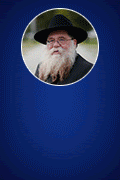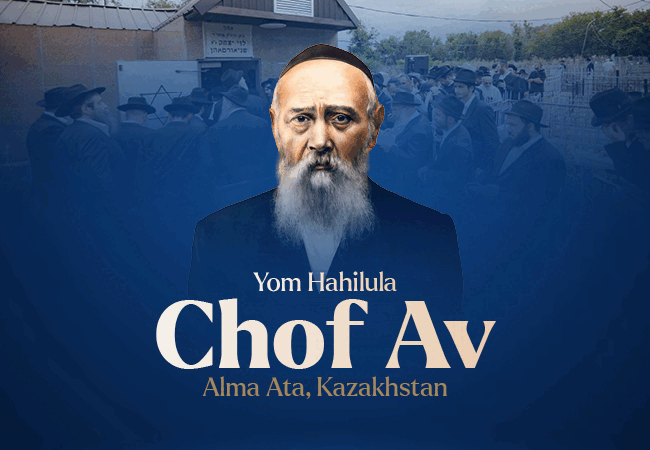
Amsterdam’s Yom HaFootball Is Where Soccer Meets Jewish Unity
by Mendel Scheiner – chabad.org
At AFC Sports Park in Amsterdam, an extraordinary sight unfolds each June: Jews of all stripes and backgrounds descend on the Dutch park to play soccer together. More than 2,000 Jewish participants from across Europe converge there annually for Yom HaFootball, the largest annual Jewish gathering in the Netherlands. The unique tournament has evolved far beyond its athletic origins to bring together attendees in the performance of mitzvahs as well.
“Jews from all walks of life come to play soccer and perform mitzvahs,” explains Rabbi Mendel Katzman, youth director at Chabad-Lubavitch at The Hague. “It’s an amazing and unifying experience.”

Founded in 1980, the tournament features 60 teams competing on sunburnt turf. On the sidelines, the sounds of Jews praying together comes from a shuckling minyan, mixing in with the noises of coaches shouting in Dutch from opposite benches. Between matches, dozens of players in knee-high socks hurry to the tefillin stand, manned by Chabad emissaries, seeking a spiritual moment and, just maybe, an esoteric competitive edge. The Chabad rabbis manning the stand are not above playing, either, allowing their tzitzit to sway freely beneath colorful soccer jerseys.
Beyond soccer, the tradition has evolved into a social phenomenon. Young couples weave strollers through the kosher food stalls as kids chase the sound of music. Picnics blanket the green fields, with families splitting falafel balls and alternating bites of shawarma. The gathering has become an annual reunion, bridging Jewish communities across the Netherlands and neighboring European countries.

The Footballer Rabbi
For four decades, the soul of Yom HaFootball was Katzman’s grandfather Rabbi Yitzchak Vorst, who passed away in 2023 at the age of 85. The founding Chabad-Lubavitch emissary to the Netherlands, Rabbi Vorst made Chabad’s tefillin station into a legendary fixture of the beloved annual tradition, where thousands of participants made it their yearly tradition to wrap tefillin with the diminutive Holocaust-survivor rabbi.
Sent to the Netherlands, his native country, at just 25 by the Rebbe—Rabbi Menachem M. Schneerson, of righteous memory—with instructions noting that “there are plenty of engineers in the world, and that your purpose is to disseminate Judaism,” Rabbi Vorst embodied the Rebbe’s approach of meeting Jews where they were.
In one famous photo, the Yom HaFootball champions of 1995 hoist the trophy with their arms slung over one another, wearing fatigued smiles. At the center stands the rabbi, dwarfed by his teammates. He wears an extra-large jersey, with bright sneakers peeking out from the hem of his suit pants. The sleeves of his white dress shirt are still rolled up from the match. Rabbi Vorst played in the annual tournament regularly, building warm relationships with countless Dutch Jews, many of whom wouldn’t have believed the tale of a bearded Chassidic rabbi playing soccer had they not seen it with their own eyes.

His son, Rabbi Yehuda Vorst, recalls his father’s ability to relate to others: “He connected with every Jew, from telling entertaining stories to 5-year-olds on Shabbos afternoons, to teaching teenage students and young professionals. Once he began attending Yom HaFootball, everyone knew him. It became a meeting place where people gladly put on tefillin, a reflection and culmination of all the work he was doing.”
Rabbi Vorst’s impact on Dutch Jewry extended far beyond the soccer field, spanning local Jewish schools, universities, camps, and communities throughout the country. His touching style of acceptance and giving made Judaism approachable for thousands.
“It’s important to remember that we are in the business of sowing seeds,” Rabbi Vorst would say. “Every interaction with a Jew plants a seed that will grow into fruit-bearing trees far beyond what we could imagine.”
Today, 22 Chabad emissary families across the Netherlands carry forward the influence of his life’s work and mission, and the tefillin stand at Yom HaFootball is dedicated to his memory. For all those that take the oppertunity to get in touch with their spiritual side, they’re reminded of the rabbi’s legacy. At Yom HaFootball, soccer serves as the vehicle, but connection remains the goal—one interaction, one mitzvah, one game at a time.
















